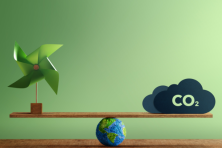Washington needs more clean energy. Specifically, we need to double our supply of clean electricity by 2050 to meet growing demand; ensure a reliable, resilient grid; reduce energy costs; and bring good living wage jobs to the state. The rising energy needs of data centers across the Pacific Northwest and climate-driven extreme weather have only exacerbated this challenge in recent years.
Delivering more clean energy requires a bigger and better transmission system. And building the power lines and other infrastructure needed to move clean electricity from point A to point B is a long, complex process. As we wrote last month, it can take about two decades to build new transmission in Oregon—and Washington is on a similar time frame. Adding to these challenges is a backlog of projects trying to connect to the grid, and the Trump administration’s imposition of hundreds of job cuts at the Bonneville Power Administration, which owns and operates about 75% of Washington’s electricity transmission system.
Siting
Because transmission infrastructure spans multiple jurisdictions, new projects often must go through numerous state or local permitting processes. And finding suitable locations for a new transmission project that crosses city, county, Tribal, and state lines, while minimizing and mitigating impacts to sensitive habitat, wildlife and Tribal cultural resources, requires thoughtful and meaningful stakeholder engagement and Tribal consultation.
The Legislature takes aim at improving WA transmission
This year, the Washington Legislature has committed to easing some of these constraints and strengthening the state’s transmission capacity. Lawmakers introduced Senate Bill 5466 to enable the state to take a more active role in transmission. The bill creates a Transmission Authority aimed at facilitating state-level planning and development to help get crucial transmission projects off the ground, with the ultimate goal of selling projects to a utility or other entity that typically operates transmission projects.
The bill also encourages strengthening of existing lines using incentives, including streamlining the permitting process for advanced reconductoring and other necessary upgrades. Our previous coverage of Grid Enhancing Technologies (GETs) describes the importance of advanced technology for making transmission infrastructure more efficient and resilient; up to 40 percent of Washington’s lines are likely suitable for advanced reconductoring specifically, which would drastically improve those lines’ efficiency.
At a time when building new transmission lines can take decades, a streamlined permitting pathway to improve Washignton’s existing grid capacity, so as to minimize impacts and avoid breaking new ground, is particularly enticing as a near-term solution to an urgent challenge. At the same time, SB 5466 includes critical safeguards for sensitive lands.
The Bigger picture
Strengthening and improving our power grid isn’t just a Northwest challenge. According to the National Renewable Energy Lab, the rate of adding new transmission lines to the U.S. grid has “dramatically slowed” in the last ten years while demand for electricity has continued to balloon. Many other states are also trying to tackle this question, including our neighbors in Oregon. Now more than ever, it is the leadership of states that will ensure that the country continues to progress on a clean energy transition.





